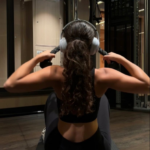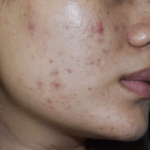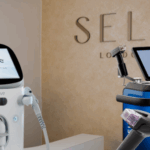
From Pilates to Pure Impact: building a better core – by Dr Anjali Mahto, Dermatologist in London
The core is often spoken about in aesthetic terms. Toned abs, flat stomachs, sculpted waistlines. But in clinical terms, the core is something very different. It is not a surface to be shaped, but a deep muscular system that underpins how we breathe, move and support ourselves. When it functions well, the body feels aligned, strong and responsive. When it begins to weaken, the changes may be quiet at first, posture shifts, breath shortens, pelvic support reduces, but over time they accumulate. The result is a subtle but persistent sense of disconnection.
At Self London, we see this often. Our patients are health literate, proactive, and already engaged in practices like Pilates, yoga and resistance training. But many still describe a feeling that the centre of their body is no longer behaving as it once did. That something has changed, not visibly, necessarily, but structurally. Despite doing the right things, they feel unsupported. Their posture softens. Lifting becomes harder. Abdominal control fades. For some, this begins after childbirth. For others, it coincides with perimenopause or weight loss. And in all cases, it deserves to be taken seriously.
The core is not one muscle. It is a three-dimensional system made up of several muscle groups working in harmony. At the top is the diaphragm, the primary muscle of breathing. It descends with each inhalation, contributing to intra-abdominal pressure and trunk stability. The abdominal wall includes the transversus abdominis, the deepest layer, which wraps around the torso like a corset. Above it are the internal and external obliques, responsible for rotation and side flexion, and the rectus abdominis, which assists in spinal flexion. At the back are the multifidus and spinal erectors, responsible for postural control and alignment. And at the base is the pelvic floor — a sling of muscles supporting the bladder, uterus and bowel, playing a key role in continence, sexual health, and load transfer through the core.
This system functions as a unit. It maintains trunk stability, supports the spine and pelvis under load, and coordinates movement and breath. When the core is strong, these functions happen instinctively. When it weakens, compensation occurs. The shoulders tighten. The glutes grip. The breath becomes shallow. And women often begin to feel like they are working harder to hold themselves upright.
There are several reasons this happens. Inactivity, stress, sedentary habits and pregnancy can all contribute. In midlife, hormonal shifts become particularly relevant. As oestrogen declines during perimenopause, women experience measurable changes in body composition, muscle mass, and soft tissue recovery. There is a documented reduction in skeletal muscle protein synthesis and lean body mass. While the precise role of oestrogen in connective tissue maintenance is still being studied, clinical observation supports what many patients report: a loss of tissue resilience, slower recovery, and reduced ability to maintain muscular tone — even with regular training.
These changes are not caused by lack of effort. Many of the women we see are consistent in their routines. But when deep structures become underactive, no amount of surface work can fully compensate. Pilates is an excellent tool for learning conscious engagement. But it relies on a functioning system. You can only cue what the body is able to access. And when core deconditioning has occurred, either through physical changes or hormonal transitions, the cues may be understood intellectually but still feel ineffective.
At Self London, we support patients at this point of plateau. We offer a combined protocol using Pure Impact and EmFemme — two clinically guided treatments designed to restore tone, control and responsiveness through the abdominal wall and pelvic floor.
Pure Impact is a non-invasive electromagnetic muscle stimulation device. It works by delivering high-intensity pulsed electric muscle stimulation to the targeted area, producing supramaximal contractions. These are stronger and deeper than those achievable through voluntary exercise, and they reach fibres that are often inaccessible once tone has declined. Over the course of a 30-minute session, thousands of contractions are delivered, helping to re-establish neuromuscular recruitment and endurance. At Self London, this treatment is delivered by a senior therapist who is also a qualified personal trainer. Protocols are adapted to each patient’s physical capacity and clinical presentation.
Pure Impact is used most often in the abdominal wall and glutes, particularly in patients who have experienced muscle deconditioning following childbirth, illness, hormonal change or significant weight loss. It is also used to correct imbalances in trained individuals who struggle to recruit certain areas effectively, despite good technique.
EmFemme is a discreet, internally delivered radiofrequency treatment designed to restore tone and blood flow to the pelvic floor. It is performed by our women’s health doctor and requires no anaesthesia or downtime. The treatment stimulates collagen production and supports local tissue regeneration, improving both structural support and physical comfort. Patients often seek EmFemme for early pelvic laxity, mild stress incontinence, changes in sensation or reduced pelvic control during movement. While many have had children, others have not. Hormonal ageing alone can affect the elasticity and tone of the pelvic floor. This is not a postnatal issue alone. It is a structural and functional one; one that deserves a more nuanced solution than pelvic floor exercises alone.
The combination of Pure Impact and EmFemme allows us to treat the core as a whole. Not just the visible abdominal wall, and not just the pelvic floor in isolation, but the entire pressure-regulating system that holds the body together. We are not aiming for surface change. We are aiming for functional restoration of posture, of control, of balance and of physical confidence.
Our patients report a wide range of outcomes. For some, it is the return of core connection after years of feeling numb or disconnected. For others, it is reduced bloating and better waist definition. Some notice improved performance in the gym, particularly in lifting or bracing under load. Others feel more stable when walking or running, less reliant on external compensation, and more capable in daily life. These are not cosmetic outcomes, though some are visible. They are structural. And they are meaningful.
This protocol is not appropriate for everyone. It is not a quick fix. It is a medically led, device-supported intervention designed for women who already engage in movement and care about their long-term strength. Many have tried to solve this with discipline. They are not looking for shortcuts. They are looking for solutions that respect the complexity of their bodies.
At Self London, you will be treated with care and precision. Consultations are thorough. Treatment is discreet. Nothing is sold without need. We understand the anatomy. We understand the physiology. And we understand the frustration of being told that something is “just part of ageing” when you know your body better than anyone.
If you are feeling less supported through your centre, whether after childbirth, during hormonal change, or simply with time, you are not imagining it. You may not need surgery. You may simply need a more intelligent kind of support.
The core is not something to flatten. It is something to rebuild with clinical intelligence, structural clarity, and care that respects your standards.





